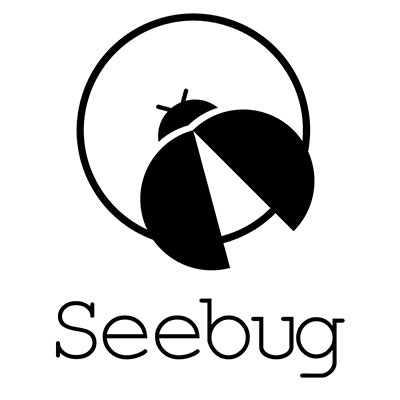# ICS Advisory (ICSA-20-056-02)
## Moxa ioLogik 2542-HSPA Series Controllers and IOs, and IOxpress Configuration Utility
Original release date: February 25, 2020
[Print Document](javascript:window.print\(\);)
[Tweet](https://twitter.com/share?url=https%3A%2F%2Fus-
cert.cisa.gov%2Fics%2Fadvisories%2Ficsa-20-056-02)
[Like Me](https://www.facebook.com/sharer.php?u=https%3A%2F%2Fus-
cert.cisa.gov%2Fics%2Fadvisories%2Ficsa-20-056-02)
[Share](http://www.addthis.com/bookmark.php?url=https%3A%2F%2Fus-
cert.cisa.gov%2Fics%2Fadvisories%2Ficsa-20-056-02)
### Legal Notice
All information products included in [https://us-cert.gov/ics](/ics) are
provided "as is" for informational purposes only. The Department of Homeland
Security (DHS) does not provide any warranties of any kind regarding any
information contained within. DHS does not endorse any commercial product or
service, referenced in this product or otherwise. Further dissemination of
this product is governed by the Traffic Light Protocol (TLP) marking in the
header. For more information about TLP, see [https://www.us-
cert.gov/tlp/](/tlp/).
* * *
## 1\. EXECUTIVE SUMMARY
* **CVSS v3 7.5**
* **ATTENTION:** Exploitable remotely/low skill level to exploit
* **Vendor:** Moxa
* **Equipment:** ioLogik 2542-HSPA Series Controllers and IOs, and IOxpress Configuration Utility
* **Vulnerabilities:** Cleartext Storage of Sensitive Information, Cleartext Transmission of Sensitive Information, Incorrectly Specified Destination in a Communication Channel
## 2\. RISK EVALUATION
Successful exploitation of these vulnerabilities could crash the device or
allow access to sensitive information.
## 3\. TECHNICAL DETAILS
### 3.1 AFFECTED PRODUCTS
Moxa reports these vulnerabilities affects the following products:
* ioLogik 2500 series firmware, Version 3.0 or lower
* IOxpress configuration utility, Version 2.3.0 or lower
### 3.2 VULNERABILITY OVERVIEW
#### 3.2.1 [CLEARTEXT STORAGE OF SENSITIVE INFORMATION
CWE-312](https://cwe.mitre.org/data/definitions/312.html)
Sensitive information is stored in configuration files without encryption,
which may allow an attacker to access an administrative account.
[CVE-2019-18238](http://web.nvd.nist.gov/view/vuln/detail?vulnId=CVE-2019-18238)
has been assigned to this vulnerability. A CVSS v3 base score of 7.5 has been
calculated; the CVSS vector string is
([AV:N/AC:L/PR:N/UI:N/S:U/C:H/I:N/A:N](https://www.first.org/cvss/calculator/3.0#CVSS:3.0/AV:N/AC:L/PR:N/UI:N/S:U/C:H/I:N/A:N)).
#### 3.2.2 [CLEARTEXT TRANSMISSION OF SENSITIVE INFORMATION
CWE-319](https://cwe.mitre.org/data/definitions/319.html)
Sensitive information is transmitted over some web applications in clear text.
[CVE-2020-7003](http://web.nvd.nist.gov/view/vuln/detail?vulnId=CVE-2020-7003)
has been assigned to this vulnerability. A CVSS v3 base score of 7.5 has been
calculated; the CVSS vector string is
([AV:N/AC:L/PR:N/UI:N/S:U/C:H/I:N/A:N](https://www.first.org/cvss/calculator/3.0#CVSS:3.0/AV:N/AC:L/PR:N/UI:N/S:U/C:H/I:N/A:N)).
#### 3.2.3 [INCORRECTLY SPECIFIED DESTINATION IN A COMMUNICATION CHANNEL
CWE-941](https://cwe.mitre.org/data/definitions/941.html)
Frequent and multiple requests for short-term use may cause the web server to
fail.
[CVE-2019-18242](http://web.nvd.nist.gov/view/vuln/detail?vulnId=CVE-2019-18242)
has been assigned to this vulnerability. A CVSS v3 base score of 5.3 has been
calculated; the CVSS vector string is
([AV:N/AC:L/PR:N/UI:N/S:U/C:N/I:N/A:L](https://www.first.org/cvss/calculator/3.0#CVSS:3.0/AV:N/AC:L/PR:N/UI:N/S:U/C:N/I:N/A:L)).
### 3.3 BACKGROUND
* **CRITICAL INFRASTRUCTURE SECTORS:** Critical Manufacturing, Energy, Water and Wastewater Systems
* **COUNTRIES/AREAS DEPLOYED:** Worldwide
* **COMPANY HEADQUARTERS LOCATION:** Taiwan
### 3.4 RESEARCHER
Ilya Karpov and Evgeniy Druzhinin from Rostelecom-Solar reported these
vulnerabilities to Moxa.
## 4\. MITIGATIONS
Moxa has developed a solution to address these vulnerabilities: Please contact
[Moxa Technical Support](https://www.moxa.com/support/support/technical-
support) for a security patch.
Please see [Moxa's security
advisory](https://www.moxa.com/en/support/support/security-
advisory/iologik-2542-hspa-series-ioxpress-vulnerabilities) for more
information.
CISA recommends users take defensive measures to minimize the risk of
exploitation of this vulnerability. Specifically, users should:
* Minimize network exposure for all control system devices and/or systems, and ensure that they are [not accessible from the Internet](https://www.us-cert.gov/ics/alerts/ICS-ALERT-10-301-01).
* Locate control system networks and remote devices behind firewalls, and isolate them from the business network.
* When remote access is required, use secure methods, such as Virtual Private Networks (VPNs), recognizing that VPNs may have vulnerabilities and should be updated to the most current version available. Also recognize that VPN is only as secure as the connected devices.
CISA reminds organizations to perform proper impact analysis and risk
assessment prior to deploying defensive measures.
CISA also provides a section for [control systems security recommended
practices](https://www.us-cert.gov/ics/recommended-practices) on the ICS
webpage on [us-cert.gov](https://www.us-cert.gov/ics). Several recommended
practices are available for reading and download, including [Improving
Industrial Control Systems Cybersecurity with Defense-in-Depth
Strategies](https://www.us-
cert.gov/sites/default/files/recommended_practices/NCCIC_ICS-
CERT_Defense_in_Depth_2016_S508C.pdf).
Additional mitigation guidance and recommended practices are publicly
available on the [ICS webpage on us-cert.gov](https://www.us-cert.gov/ics) in
the Technical Information Paper, [ICS-TIP-12-146-01B--Targeted Cyber Intrusion
Detection and Mitigation Strategies](https://www.us-cert.gov/ics/tips/ICS-
TIP-12-146-01B).
Organizations observing any suspected malicious activity should follow their
established internal procedures and report their findings to CISA for tracking
and correlation against other incidents.
CISA also recommends users take the following measures to protect themselves
from social engineering attacks:
* Do not click web links or open unsolicited attachments in email messages.
* Refer to [Recognizing and Avoiding Email Scams](https://www.us-cert.gov/sites/default/files/publications/emailscams_0905.pdf) for more information on avoiding email scams.
Refer to [Avoiding Social Engineering and Phishing Attacks](https://www.us-
cert.gov/ncas/tips/ST04-014) for more information on social engineering
attacks.
No known public exploits specifically target these vulnerabilities.


暂无评论